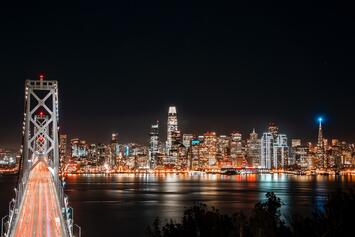
You’ve probably seen photos or videos of huge homeless encampments in America’s cities, like the ones in this Daily Mail article about Portland.
You’ve probably seen footage of brazen shoplifting in San Francisco, and heard about how retailers like Wal-Mart, REI, and Nordstrom are closing urban stores.
You’ve probably read about growing urban crime or seen disturbing videos such as when a group of teens and young adults were running amok in Chicago, for example.
You’ve probably heard about how remote work is threatening the future of downtowns, with half or more of workers not coming into the office anymore.
You’ve probably heard about the population exodus from urban centers during Covid, and about population drops in formerly booming places like San Francisco and Portland.
This drum beat of bad news seems to have created a sense among some that cities are doomed. There’s certainly a class of people who would welcome this, and so they are motivated to share all the bad news and emphasize the ways that big cities are in big trouble.
However, I’d like to encourage people to have a sense of perspective here. The very nature of the news cycle (e.g., “if it bleeds, it leads”) selects for bad news. It’s very easy for people without on the ground knowledge to draw conclusions that may not be warranted.
I have studied cities professionally. I also have visited a number of big cities recently. In the last two months I’ve been to NYC twice, Chicago, and Washington. In each case, the challenges are evident.
But if all you had to go on in judging these cities is what you saw when you visited them, you’d never think they were in danger of collapse. The north side neighborhoods of Chicago still sparkle. New York City is lively. Even downtown Washington has improved a lot since last summer.
This is not the early 1990s when even people in New York’s most upscale neighborhoods felt like they had to carry “mugger money.” Most people are not going to experience that kind of crime today.
Additionally, rents remain very high - they’ve even gone up a lot in NYC recently. For sale housing has held up well in most places. And the hotels are full (90% occupancy in New York). Here in Indianapolis, for example, downtown apartments are essentially completely leased up.
Read the rest of this piece on Aaron Renn Substack.
Aaron M. Renn is an opinion-leading urban analyst, consultant, speaker and writer on a mission to help America's cities and people thrive and find real success in the 21st century. He focuses on urban, economic development and infrastructure policy in the greater American Midwest. He also regularly contributes to and is cited by national and global media outlets, and his work has appeared in many publications, including the The Guardian, The New York Times and The Washington Post.
Photo: Griffin Wooldridge, under
CC 2.0 License.












